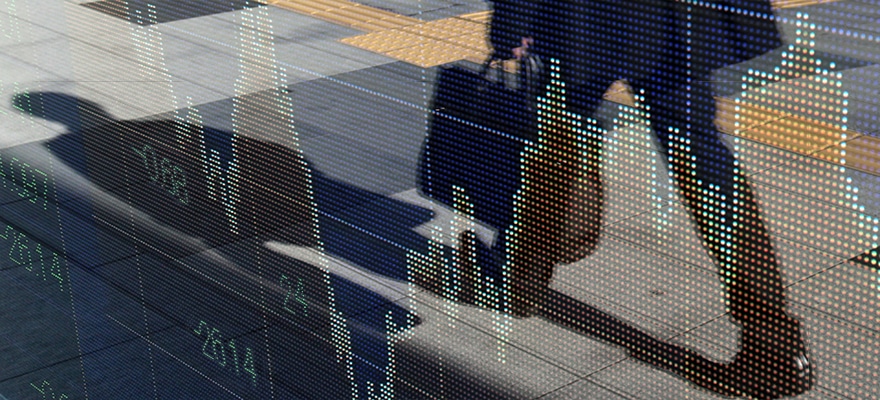
ETFs have fared well on the back of uncertain trading conditions in Q3. According to data issued by the industry body, ETFGI, the alternative investments products (ETFs and ETPs) hit record assets under management. Strong net inflows of $35 billion in September, and positive market performance helped to push global ETF and ETP assets to US$2.22 trillion.
Year-to-date net inflows into ETFs/ETPs are at US$168.9 billion, which is below the US$188.4 billion from figures reported a year earlier. Equity ETFs/ETPs gathered the largest net inflows with US$29.3 billion, followed by fixed income with US$5.8 billion, and commodity with US$1.2 billion.
“The Federal Reserve’s decision in their last meeting to maintain the QE scheme at its current size and positive market performance, encouraged investors to put net inflows of US$35 billion back into the market through ETFs/ETPs,” according to Deborah Fuhr, Managing Partner at ETFGI, a research consultancy for the ETF industry.
Popularity of ETFs
ETFs have found their place among investment portfolios due to the stock type features, ETFs are index-like products and provide diversification as they track a basket of instruments. In addition, they have low expense ratios and tax efficiency of index funds, while still maintaining all the features of ordinary stock, such as limit orders, short selling and options.
Charles Schwab, a leading multi-asset broker carried out a specific ETF Investors' Study in 2012 among 1,000 private investors. Results showed that ETFs were gaining a foothold among US investors and 81% of respondents believed: “Exchange-traded funds (ETFs) are here to stay,” however, education and understanding of the product is still a required feature.
Beth Flynn, vice president of ETF platform management at Charles Schwab, commented about the results in a statement to the media: “It’s very exciting to see investors rally enthusiastically around ETFs as an essential part of their investing toolbox – but now we need to make sure that their knowledge about the use of ETFs fully matures as well. Most investors generally understand that ETFs tend to offer diversification at a low-cost, but many still need more insight and education on how best to use them, the risks involved and potential tax implications.”
ETFs have been growing exponentially since the early 90’s, they provide investors with opportunities to invest in baskets of stocks or indices, thus limiting exposure in single instruments.
“ETFs are an alternative that are popular due to the mechanics of the product itself. ETFs typically attract medium to longer term investors,” said Joshua Raymond, chief market strategist of City Index, in a comment to Forex Magnates.
“The market for ETFs have grown rapidly in recent years, driven by retail and institutional investors alike. We consider it very likely that ETFs will continue to gain a broader market share in the coming years,” said Teis Knuthsen, CIO at Saxo Privatbank, in an emailed statement to Forex Magnates.
Improving regulations IOSCO
The International Organization of Securities Commissions (IOSCO), a global organization that regulates securities and futures markets, issued guidelines for the ETF industry in June this year. The global organization sought to enhance the current framework of risks and regulations associated with the product.
The Madrid-based organization, issued the report called, Principles for the Regulation of Exchange Traded Funds (ETFs), containing nine important principles intended to guide the regulation of ETFs, and foster industry best practices in relation to these products.
“It is useful for international securities' regulators to discuss and understand the regulations of ETFs and Collective Investment Schemes in various jurisdictions to understand the reasons for any difference in regulations, and to see if they can move to a more similar set of regulations globally and to differentiate ETFs from other ETPs that are not funds . Often people can use the same terms ETFs or ETPs to cover a wide array of product structures which can cause confusion, and cause investors to invest in things that have different tax, regulatory and counterparty exposures that they often don’t understand.
It is also useful to identify the differences in regulations between different jurisdictions and the reasons for these differences, as many investors may not be aware that there are differences. The challenge is, I think, everyone would now like to have one set of guidelines and a level playing field for ETFs that are funds and other ETPs that are not funds, and be able to move on as opposed to the continuous dialogue,” said Ms. Fuhr in a statement.
CFDs on ETFs are used by investors looking to take advantage of the movements in the stock like products. Investors can trade on Leverage with the advantages of traditional CFDs and further speculate or hedge their positions. Forex Magnates expects the ETF industry to grow 3% annually as global markets stabilize, particularly in emerging markets. In addition, issuers such as iShares have been expanding the number of global ETFs, thus opening up opportunities for investors looking for exposure in emerging and frontier markets. A Deutsche Bank (Hong Kong) survey with international investors in Asia found that 55% had invested in ETFs with only 5% of assets, thus outlying significant opportunities in the region.

















